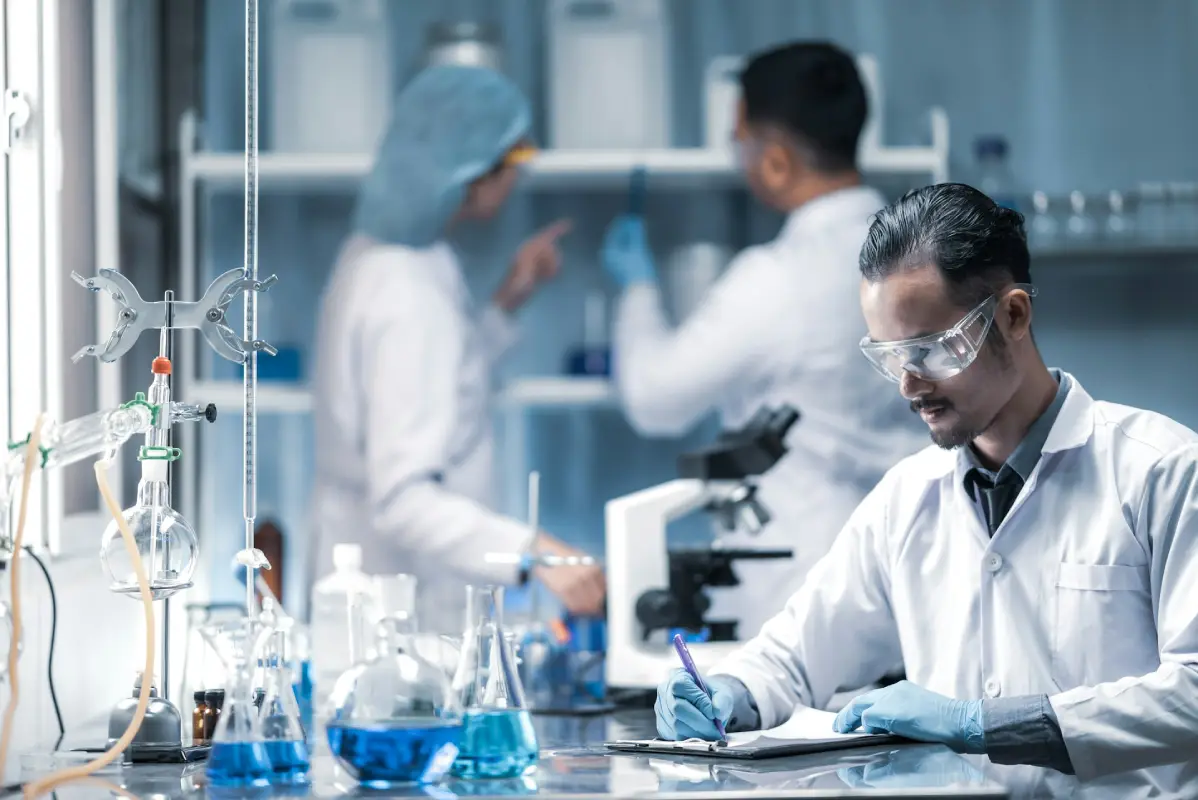Potent compounds have transformed pharmaceutical development, offering dramatically improved disease therapies. However, their strength and activity also bring higher risks if not managed carefully. For example, an HPAPI (Highly Potent Active Pharmaceutical Ingredient) can cause significant health effects even at extremely low concentrations.
Rigorous safety procedures are essential from initial research all the way through manufacturing, not just to comply with regulations but also to protect workers, prevent contamination, and ensure product quality.
As new compounds are discovered and assessed, international regulatory agencies have introduced advanced guidelines for safe handling.
Contents
Defining Potent Compounds and Associated Risks
Its high biological activity defines a potent compound; even minute quantities can trigger pharmacological or toxic responses. These substances often have low occupational exposure limits, meaning strict weighing, transferring, and processing protocols are mandatory. The risk spectrum ranges from acute health effects from accidental exposure to longer-term issues like cross-contamination within manufacturing sites.
Because of such risks, potent compounds are categorized according to their toxicity profiles. This critical classification process guides decisions about containment, personal protective equipment (PPE), and waste management strategies. Adhering to precise categorization minimizes workplace incidents and reduces compliance burdens during audits or site inspections.
Principles of Safe Containment
Pharmaceutical companies implement multiple layers of containment to protect both people and products. Engineering controls such as biosafety cabinets, negative pressure rooms, and HEPA filtration systems are at the core—hard-walled isolators and barrier technology completely separate handlers from the product, preventing airborne release and accidental contact. Easy-to-clean, seamless surfaces support more thorough decontamination between batches.
These safety measures are routinely validated and monitored to meet regulatory requirements. They also help ensure consistent product quality, which is especially important for drugs with narrow therapeutic windows or highly sensitive dosages.
The Role of Training and Teamwork
No matter how advanced the technology, safe handling ultimately depends on well-informed and vigilant people. Ongoing training helps ensure that every team member understands proper PPE donning and doffing, correct use of containment devices, and emergency protocols. Frequent refresher courses, hands-on practice, and incident simulations create a responsive culture ready for unexpected scenarios.
Peer learning and transparent communication empower workers to share concerns and suggest improvements. The most effective organizations celebrate proactive safety reporting and continuous education as key performance indicators, not just regulatory checkboxes.
Modern Workflow for Potent Compound Handling
Handling potent compounds involves a series of coordinated steps. It starts with a detailed risk assessment, where multidisciplinary teams evaluate compound hazards and operating environments. Preparations include configuring dedicated containment areas, checking airflow and pressure systems, and staging PPE for every production stage.
Material handling procedures call for sealed systems whenever possible and strict monitoring during transfers, weighing, and sampling. Potent waste is collected in double-sealed, labeled containers and tracked for proper disposal. After each batch, thorough decontamination and surface testing validate the effectiveness of cleaning, with results carefully logged for compliance.
Innovations in Safety and Containment
The pharmaceutical sector is leveraging digital tools, automation, and robotics to reduce further risks associated with HPAPI handling. Integrated sensors can track real-time air quality, triggering alerts or automated responses when exceeding thresholds. Robotics is increasingly taking over dangerous repetitive tasks, especially in high-volume or precision settings. Companies bolster safety and operational resilience by following protocols like those outlined by OSHA’s chemical hazard guidelines.
These advancements reduce human error and support faster regulatory compliance, better product integrity, and higher staff morale.
Cultivating a Culture of Responsibility
A meaningful safety culture relies on open reporting, active learning, and recognizing employees who contribute to continuous improvement. From entry-level lab techs to senior leaders, everyone must feel empowered to identify gaps, report near misses, and offer new solutions. Such organizations often see fewer incidents, increased satisfaction, and more consistent product results.
Continuous Improvement for the Future
As potent compounds become vital to therapeutic advancements, continuous review and innovation in safe handling practices will be essential. Adapting to new guidance and leveraging emerging technology supports safer employees, more reliable products, and a greater competitive advantage. The best practices established today form the foundation for safe, effective drug development in the future.



